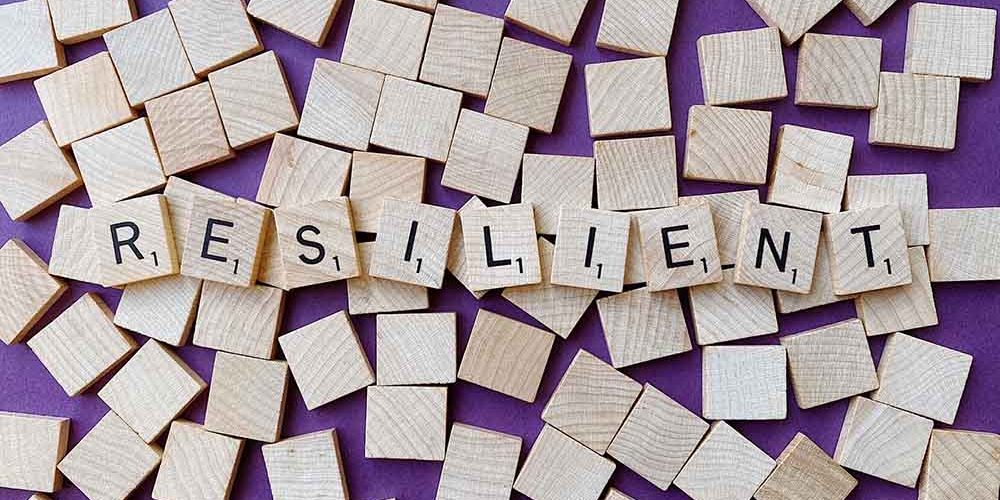Written by Gaëlle Loiseau, 19 April 2020
The Covid-19 outbreak has triggered inspiring reactions from the private sector to support communities with philanthropy and Corporate Social Responsibility initiatives. The question is how do we maintain this momentum on the medium and long term with Shared Value?
Creating Shared Value (CSV) is a long-term strategy creating differentiation through social innovation and collaboration. Because of this, it is not a crisis management tool – long-term planning, innovation and building partnerships take time, and a crisis doesn’t provide that luxury.
However, Shared Value is a great framework to build long-term resilience, serve new marketplaces and preserve the ecosystems. The current crisis can be a powerful trigger for such strategies.
Build long-term resilience
There is nothing like a crisis to surface an organisation’s true values – good or bad. But only a business that can demonstrate its relevance in society over the long run is able to build legitimacy.
Walmart had such an epiphany when they mobilised their assets to provide emergency relief after Hurricane Katrina. Their size and reach, for which they had been heavily criticised, became a source of trust during the disaster. Once the company had found purpose, it was hard to unlearn it and Walmart has made Fortune’s ‘Change The World’ list ever since. This list recognises Shared Value companies “using the creative tools of business to help the planet and tackle society’s unmet needs”.
Another example comes from Medtronic, a purpose-led medical technology company. During Covid-19, they realised they could not meet the spike in demand for ventilators and decided to open-source the intellectual property for their flagship ventilator. The response has been so positive that the company said they would consider further releases going forward.
Our systems perform highly during business-as-usual, but a single virus has exposed the vulnerability of our just-in-time models. Health systems are overwhelmed and global food supply chains are disrupted.Going forward, companies will benefit from trading-off some efficiency for more resilience.

Picture by fritsahlefeldt.com
Investing in preparedness is cheaper that reacting to disasters after they arise. Recognising this, IAG, Australia’s largest general insurer, collaborated with Red Cross on the ‘Get Prepared’ app. The tool helps people complete emergency plans for various hazards to improve safety and reduce property damages. But it also has the potential to reduce insurance claims for IAG, thereby creating shared value.
Pandemics have been identified as a very high risk for several years and 3M had prepared for such an event by building latent capacity. As a result, they were able to increase production of their N95 respirator masks almost instantly when Covid-19 hit. Building resilience involves acting on risk assessments and recognising that the costs incurred are a bargain compared to the price tag of an emergency response.
Innovate to serve the new marketplace
Shared Value aims to create competitive advantage and that involves doing things differently. But innovation doesn’t need to be costly or to rely on new technologies. Instead, Social innovation often stems from new thinking, such as expanding Bogota’s bike lanes as a way to fight the spread of the virus in overcrowded public transport, a move that involved very little costs.
The forced work from home experiment during the global public health crisis is also likely to have a lasting impact on the future of work with the potential to increase efficiencies and reduce costs in office real estate. It is also probable that production and consumption will be disrupted for the long-term. Businesses who can adapt to the post-crisis marketplace by repurposing assets and business models to serve people better will come out on top.
People will still consume of course but may do so differently as they question what they really need but also how they want to spend their time and money. Ecommerce, video-conferencing platforms as well as businesses helping people cook at home, like Blue Apron, have seen increases in revenue. On the other hand, struggling industries like hospitality can take an honest look at the markets they serve and adapt their models. Why not develop an attractive ‘staycation’ offer for local customers to holiday near their homes?
If indeed we have reached the limits of globalisation, governments and businesses will seek to build resilience with more local supply chains and new business opportunities will arise. As an example, New World Development has responded very quickly to the outbreak by setting up a facemask production line in Hong Kong to serve the under-privileged but also address their own operational needs.
Many companies pivoted their operations to provide much needed resources during the outbreak, and it will be interesting to see if the forced diversification of products (fragrance companies producing hand sanitizer), retail channels (event planners turning to online options) and supply chains (large food retailers turning to local suppliers) continue past the crisis as a way to adapt to the new economy.
Collaborate to preserve the ecosystem
Covid-19 has surfaced our interconnectedness as the outbreak in China quickly became a global concern. It has triggered a collective sense of responsibility – but will it last? If we recognise that a cluster cannot operate without its weakest link, then it’s no longer survival of the fittest but rather preservation of the whole ecosystem. If one factory breaks down, the whole supply chain is broken.

Picture from fritsahlefeldt.com
Companies don’t need to have everything figured out on their own: being the catalyst for collaboration within their cluster is powerful. For example, when Qantas CEO in Australia called his Woolworths counterpart to suggest seconding some of the airline’s furloughed staff to the retailer to help respond to the surge of customers in supermarkets. This creative arrangement has the double advantage of maintaining some income for employees as well as solving a pain point for Woolworths facing staff shortages.
Businesses may also have to adapt to more interventionist governments coming out of the crisis and as Paul Polman puts it, organisations who can ”forge enlightened alliances with their competitors, civil society, and official agencies will be better positioned to deal with interventionist governments and the pendulum of polarized politics.”
Another key aspect of successful partnerships and CSV is listening – Listening to users to understand their needs, listening to experts to design impactful solutions. And during the crisis: listening to the global perspective on virus-fighting strategies, listening to stakeholders who may need support. Unilever for instance is offering early payment to valuable small or medium suppliers to help their financial liquidity.
At the risk of sounding like the slogans on staying home and wearing masks: can we build empathy in our systems to protect stakeholders and ourselves by the same token?

Interaction Institute for Social Change interactioninstitute.org | Artist: Angus Maguire madewithangus.com
Since all stakeholders are not equal before the crisis, businesses need to get comfortable responding unevenly according to different circumstances. When Medtronics was faced with the surge in demand for ventilators during the coronavirus outbreak, they came up with an allocation method to serve orders according to real needs rather than price offers.
Gravity Payments, a credit card processing and financial services company, was facing bankruptcy within 6 months. The CEO consulted employees on ideas to avoid the demise of the business and they each volunteered pay cuts according to what they could afford.
What’s next?
Purpose-led businesses will have a better chance to survive in the post-Covid-19 economy. As Mike Barry, former sustainability director of M&S put it in a recent GlobeScan webinar: businesses need to figure out their WHY? WHAT? and HOW?
Purpose is the first step, it is the WHY. But organisations also need to determine WHAT is material to their business, which issues are relevant to their core business model and where they have the potential to have a significant impact. HOW is the implementation: how they embed Shared Value across the business to create resilient and profitable businesses that contribute to a thriving society rather than live at its expense.
One of the great opportunities for businesses to lead will be to make their purpose tangible for employees, customers, suppliers, investors, and community members. There is a yearning to do great things that came out of the crisis and businesses that can capture that will fare better.
The unexpected consequences of the outbreak has made our potential reality palpable: Not only do we see how reactive we can be – the speed of response at citizen, business and sometimes government level – but also how quickly our environment, lifestyles and social contract can change – the speed of nature recovery, how quickly we adapted to working from home, how suddenly the ones at the bottom of the pyramid are the heroes.
Businesses who can articulate a positive narrative around the world we are aiming for rather than the hardship to get there can lead by holding that vision as a beacon for collective action.
Shared Value as the roadmap to purpose
As businesses come out of the Covid-19 whirlwind, some will take the opportunity to recap on the learnings from the crisis: where did their expertise matter, what were they able to contribute to their community, how can they build resilience going forward and adapt to the new normal. For those, Creating Shared Value will be a good framework to define new strategies and invent new business models.
About Gaëlle Loiseau
 Gaëlle Loiseau is the former CEO of Shared Value Initiative Hong Kong
Gaëlle Loiseau is the former CEO of Shared Value Initiative Hong Kong

